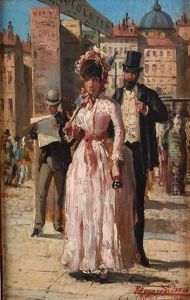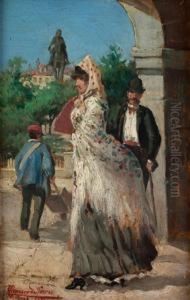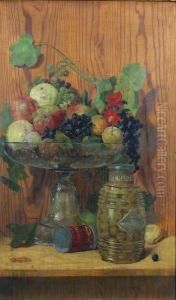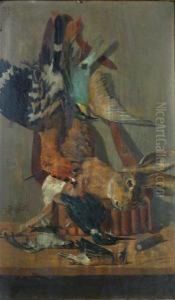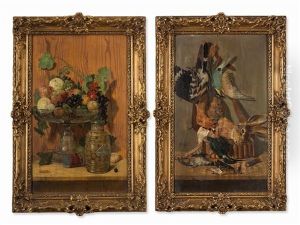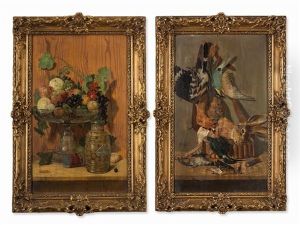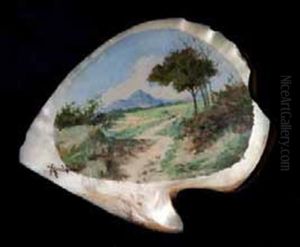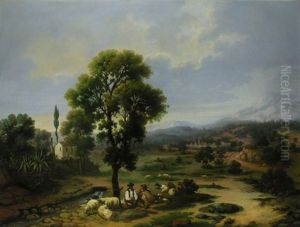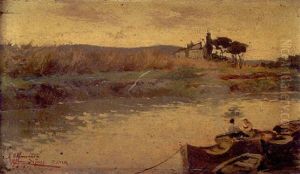Rafael Romero De Torres Paintings
Julio Romero de Torres was a Spanish painter who became one of the most emblematic figures in Spanish art, especially noted for his depictions of Andalusian women. Born on November 9, 1874, in Córdoba, Spain, he was the son of the painter Rafael Romero Barros and was exposed to art and painting from a very young age. His father was also the director of the local Museum of Fine Arts, which provided Romero de Torres with the opportunity to study a variety of artworks and painting techniques.
Romero de Torres began his artistic education at the School of Fine Arts in Córdoba and later continued his studies in Madrid. In his early career, he worked as an illustrator for magazines and periodicals, while also painting portraits and local scenes. His style initially showed the influence of Symbolism and the aesthetic of the Pre-Raphaelites. However, as he matured as an artist, he developed a more personal style characterized by a unique blend of Symbolism, Realism, and Art Nouveau. He often depicted traditional Andalusian themes, including the flamenco culture, folklore, and the female figure, which became central to his work.
By the early 20th century, Romero de Torres had gained significant recognition in Spain. His works were exhibited in several national exhibitions, and he received various awards and honors. Some of his most famous paintings include 'La Chiquita Piconera', 'Naranjas y Limones', and 'Poema de Córdoba'. His paintings are notable for their sensual and sometimes mystical representations of women, often set against the backdrop of the Andalusian landscape or interiors filled with symbolic elements.
Romero de Torres's work was also influenced by his interest in social issues and the human condition, which is reflected in some of his paintings depicting the struggles of the working class. Despite this, he is best remembered for his portraits of women, which are considered to capture the essence of Andalusian beauty and spirit.
Julio Romero de Torres passed away on May 10, 1930, in Córdoba. His legacy lives on through his contributions to Spanish art, and his works continue to be celebrated for their beauty, technical skill, and cultural significance. The Julio Romero de Torres Museum in Córdoba, which opened in 1931, is dedicated to his life and work, housing the largest collection of his paintings.
